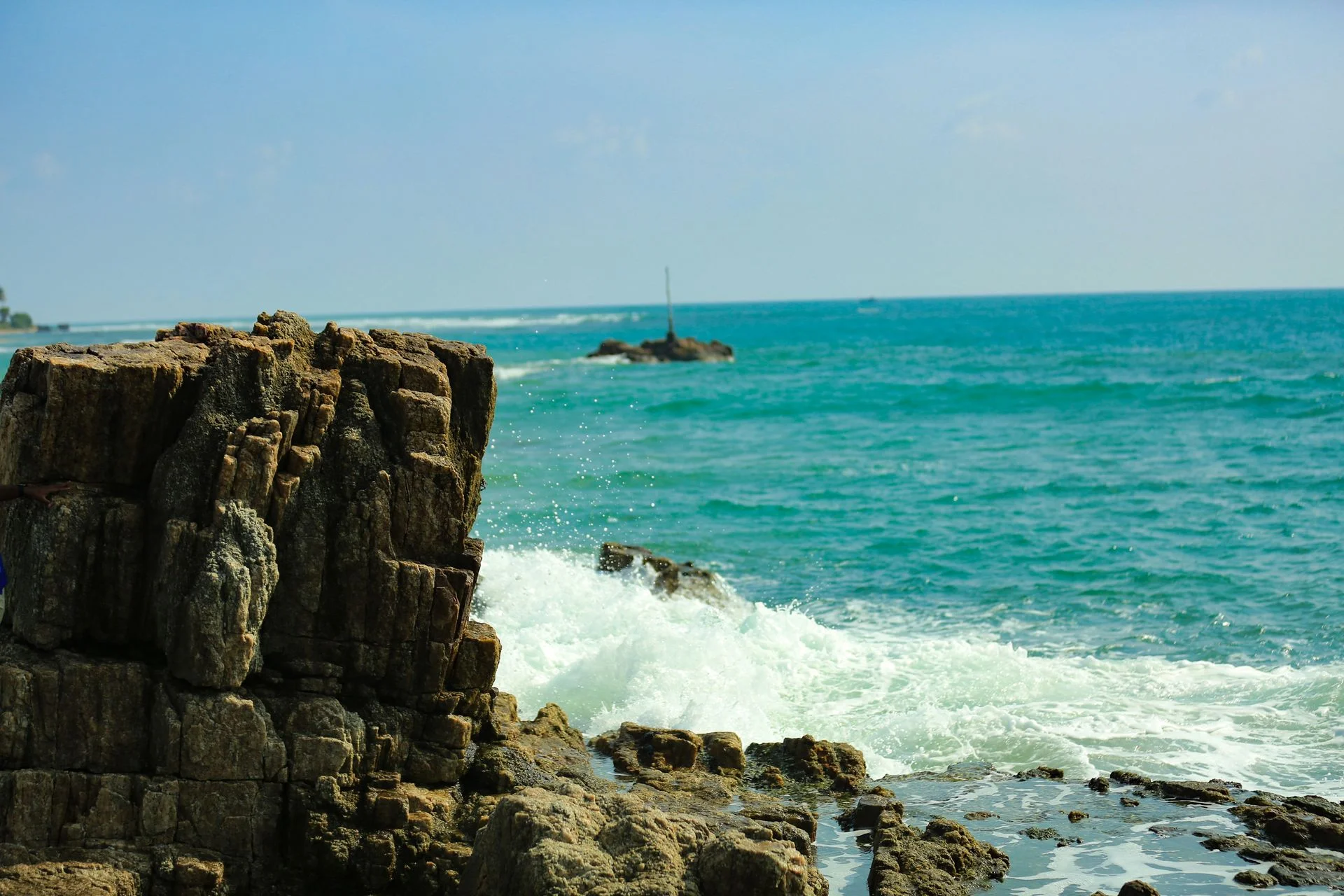Scuba Diving in Trincomalee
The Ultimate Guide
Trincomalee sits on Sri Lanka’s eastern coast and is famous for its sheltered natural harbour and nearby coral reefs. The region offers a mix of shallow fringing reefs, dramatic drop‑offs and historic wrecks like the HMS Hermes, the world’s first purpose‑built aircraft carrier. Pigeon Island Marine Park protects vibrant coral gardens where blacktip reef sharks patrol and hawksbill turtles graze, while Swami Rock’s vertical wall teems with reef fish and soft corals. During the calm months the waters are crystal clear, and blue and sperm whales cruise just offshore, adding to Trincomalee’s appeal as an emerging dive destination.
Difficulty
Moderate
Temperature
27-30°C
Visibility
15-30m

Diving Highlights
Best Months to Dive
Getting to Trincomalee for Diving
✈️Transportation
Fly into Colombo’s Bandaranaike International Airport (CMB).
From there, you can take a domestic flight to China Bay Airport (TRR) or travel overland.
Buses and private transfers from Colombo to Trincomalee take about 6–7 hours via the A12 highway, while train journeys via Gal Oya Junction take a similar time.
Once in Trincomalee, dive shops are clustered around the beach areas of Nilaveli and Uppuveli.
Country
Sri Lanka
Currency
Sri Lankan Rupee
Electricity
230V, 50Hz, UK/Type G plug
Cost of a Dive Trip in Trincomalee
Day Trip
Meal
Accommodation
Best Dive Sites in Trincomalee
🐠Pigeon Island Marine Park
A protected sanctuary a short boat ride from Nilaveli. Shallow coral gardens teem with hard corals, anemones and schooling reef fish. Blacktip reef sharks and hawksbill turtles are regularly seen cruising the sandy bottom, making this a favourite site for beginners and snorkellers.
🐢Swami Rock (Temple Reef)
A sheer wall that drops from 5 m down to 30 m beside the famous Koneswaram Temple. Soft corals, gorgonians and sponges cling to the cliff, attracting angelfish, butterflyfish and the occasional eagle ray. Mild currents make this a relaxing yet colourful drift dive.
🦈HMS Hermes Wreck
Resting at about 53 m, the HMS Hermes is the world’s first purpose‑built aircraft carrier, sunk during World War II. Only for technical or deep‑certified divers, the wreck is covered in black corals and hosts schools of barracuda, snapper and jacks. Large rays and occasional reef sharks patrol the open water above.
🐙Shark Point (Eel Rock)
A cluster of rocks rising from the sandy bottom where you can spot nurse sharks, reef sharks and schooling jacks. Colourful soft corals and sea whips decorate the rocks and plenty of eels hide in crevices, giving the site its nickname “Eel Rock”.
🐚Nilaveli Outer Reef
A gently sloping reef off the coast of Nilaveli with hard and soft corals, feather stars and sponges. Turtles graze on the reef top while schools of trevally and barracuda hunt in the blue. Depths range from 10 to 25 m, making it suitable for all levels.
What Divers Say About Diving in Trincomalee
Earl Philip
Technical DiverTrincomalee feels worlds away from Sri Lanka’s busier southern resorts. Calm, bath‑warm water laps long white beaches and hides reefs full of colour. You might start a morning drifting along the vertical drop‑off of Swami Rock, watching thousands of anthias flutter above the corals, and finish the day lazily swimming over Pigeon Island’s shallow reef among curious blacktip reef sharks. The HMS Hermes wreck adds a dash of history for technical divers, while snorkelers share the bay with whales and spinner dolphins. It’s a place where you can dive, whale‑watch and relax in one day.
Frequently Asked Questions About Diving in Trincomalee
When is the best time to dive in Trincomalee?
The east‑coast dry season from April to October offers calm seas and the best visibility. Outside these months monsoon winds make conditions rough.
What marine life can I see?
Expect blacktip reef sharks, hawksbill and green turtles, parrotfish, angelfish and large schools of fusiliers. Whales and dolphins cruise the outer bay, and the HMS Hermes wreck hosts barracuda, groupers and rays.
Is Trincomalee suitable for beginners?
Most shallow reef sites around Pigeon Island and Nilaveli are ideal for beginners. Advanced divers can explore deeper walls and the HMS Hermes wreck.
How many dive sites are there?
There are over a dozen sites, including Pigeon Island Marine Park, Swami Rock/Swami Pillai, Eel Rock, Shark Point, Sitanampara Reef and the deep HMS Hermes wreck.
Can I dive the HMS Hermes wreck?
Yes, but the wreck lies at 53 m and requires technical or deep‑certified divers. Many dive centres offer guided trips for those qualified.
What equipment should I bring?
Water temperatures of 27–30 °C mean a 3 mm wetsuit is adequate. Bring reef‑safe sunscreen and a hat for surface intervals.
Are there strong currents?
Currents are generally mild on the shallow reefs. Swami Rock and Shark Point can have moderate currents, especially during spring tides.